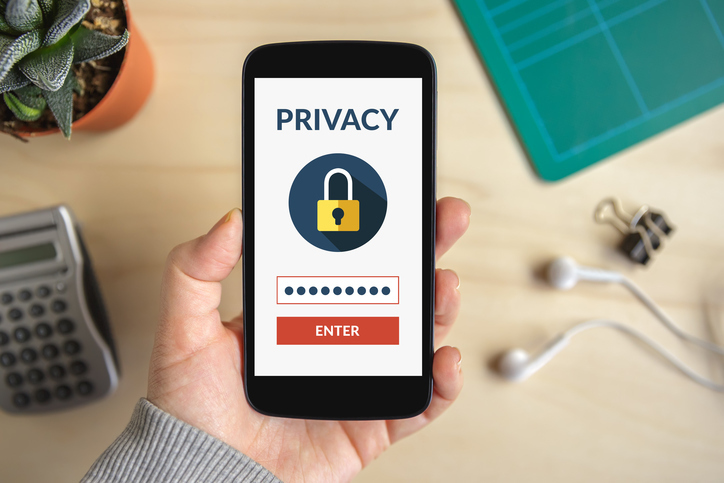 by Lynette Owens
by Lynette Owens
This article also appeared in the Huffington Post on January 27, 2017.
As our first month of 2017 comes to an end, its time to remind ourselves of our resolutions for the New Year. I’m sure many of you resolved to embrace a healthier lifestyle or take up a new hobby, but how many of you decided to make your family’s privacy an important thing on your to-do list for the year? In honor of Data Privacy Day, which we will celebrate on January 28, here are seven easy steps you can take to make sure that you and your family are keeping your private lives private online.
Step 1 – Understand what you’re saying yes to.
As a first step, you need to know what it is that your kids are doing online, and set rules about how, where and when they can do it. Be involved, knowledgeable, and interested in the devices, apps, and sites they use for school and for fun. There is more information now than ever before about how these sites or apps work, what personal information is collected or tracked by these tools, and how that data is used, stored, and shared.
For sites that your children are using for school, ask their teachers for more information. For apps they’re using at home, spend 15 minutes trying it out yourself. And ask your kids to tell you about them, too! This not only shows that you are interested, but that you are willing to learn – and most kids will be happy to teach you what they know.
Step 2 – Use privacy settings and features in browsers and devices.
Your kids are going to access their favorite sites, apps, and online services through a browser or a mobile or gaming device. Make sure you understand what privacy protections these platforms offer for your family.
Many browsers allow you to prevent sites from tracking what you do and where you go online (mostly to send you ads on other sites you visit later), so spend some time looking at web browser settings (Safari, Chrome, Internet Explorer, etc.) to see what privacy setting options are available to you.
Mobile devices also have settings that will restrict apps from knowing your physical location or accessing your camera, microphone, photos or contacts. Become familiar with your options and use these privacy settings whenever possible to help keep your family’s information safe online.
Step 3 – Use features and services available within an app or website.
Once you’ve set up privacy controls at the browser or device-level, take a look at the privacy settings available in the specific apps, websites, or games your family uses. Instagram, Snapchat, and most major social networking sites let you have a private account, which means the whole world won’t be able to see what you post or who you’re connected to. It also means that people have to ask your permission before they can follow you.
There are other privacy options to further protect the things you do even behind those privacy walls. Become familiar with them. The popular sites you use also have good information outlined on their websites in the support or help sections to walk you through these settings.
Step 4 – Go through this with your kids.
You may be learning these things for the first time, but so will your kids. Why not make it a chance to learn as a family? Review privacy settings with your kids so they understand their options for keeping what they do online as private as possible. Make sure they are using the strongest settings each service offers, while still allowing them to do what they want to do on that site, app or service.
Step 5 – Remind your kids that being online is a public life.
Remember, nothing is truly private online. If you and your family keep this in the back of your minds, it can help you all think through what you are about to post, like, and click on, as well as who you connect with online.
Step 6 – Talk to other families.
One of the biggest challenges I see regarding privacy issues online is that other kids or families may have a different definition of what is or isn’t “private.” Ever find out that someone posted a photo online that your kid is in, without you knowing until much later?
Encourage your kids to talk to their friends about how they will respect each other’s privacy online. Good friends will understand, think, and ask before posting a photo or information about their friends.
Talk to other parents about your feelings on privacy, too, and ask them for their opinions. The more we all know, the more we can all protect and respect each other’s privacy online.
Step 7 – Check-in regularly.
As your children grow older, they will be out in the world more and more without your supervision. This is true both online and offline. In either case, do your best to stay connected, involved, and interested in what is going on in their lives.
You can simply make it a topic of conversation during family dinner or car rides…or you can follow your kids on Instagram or Snapchat like I do!
And in honor of Data Privacy Day, put your privacy knowledge to the test with this BuzzFeed quiz.
Lynette Owens is the Founder and Global Director of Trend Micro’s Internet Safety for Kids and Families program. With 20+ years in the tech industry, Lynette speaks and blogs regularly on how to help kids become great digital citizens. She works with communities and 1:1 school districts across the U.S. and around the world to support digital literacy and citizenship education. She is a board member of the National Association of Media Literacy Education and serves on the advisory boards of INHOPE, Media Literacy Now, and U.S. Safer Internet Day.
Follow her on Twitter @lynettetowens
Lynette Owens is Vice President of Consumer Education & Marketing at Trend Micro and Founder of the company's signature Internet Safety for Kids and Families program. With 30+ years in the tech industry, Lynette oversees global initiatives to help deliver the technology tools and education that people of all ages need to keep themselves and their families safe online. She serves on the advisory boards of the Identity Theft Resource Center's Alliance for Identity Resilience, the Global Anti-Scam Alliance, and INHOPE.
